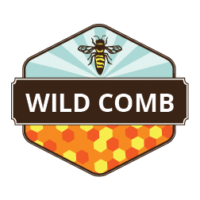About Queens
Q: How many bees can each queen produce?
A: A single queen can produce up to 3,000 eggs a day.
Q: How often will she mate?
A: The queen will mate as many as 30 times with 15-20 drones. This provides both genetic diversity and hybrid vigor to the colony.
Q: What does a queen do other then lay eggs?
A: Her presence is intimately associated with the moral of the colony, which is known to the bees by their sharing of the pheromones.
Q: Interesting fact about a queen?
A: The queen’s presence influences the behavior of worker bees but she does not direct the activities of the colony.
Queen Raising Process
Q: How do you focus on nutrition for your queens?
A: We constantly provide a micro nutrient mix to the queenless starter/finisher colonies. We also provide small grafts to each colony to secure extra nurse bees to each cell.
Q: How do we ship queens?
A: We currently only ship queens via United States Postal Office (USPS). We ship on Mondays and Tuesdays. We only ship on Wednesday if the location will delivery by Friday.
Q: When do we ship queens?
A: We ship queens mid-May through the end of September depending on weather conditions.
5-Frame Nuc Installation
Supplies needed for installation of the nuc:
- Veil and appropriate protective gear
- Hive Tool
- Smoker
- Nice to have: Spray bottle filled with sugar water.
In Advance of the arrival of the nuc:
- Prepare your hive equipment in preparation of receiving bees.
- Place hive equipment in final location before bees arrive.
- Plan to install nuc either day of pick up or next day.
Transportation
- If at all possible, a truck or vehicle with open bed is the best for transportation. If utilizing a car please bring an old bed sheet to cover the nucs. Dress warmly, as running the air conditioner will help keep the bees cool and happy. In the bee world, cool is always better for transportation.
- We will have the nuc lids nailed on and entrances screened for transportation. Nucs will also be watered to help keep them cool during transportation. We will do our best to remove all excess bees from the outside of the boxes.
- Once nucs are loaded, head directly home. Do not stop for an extended period of time as the heat will kill your hive. Rain and cool wind will help keep the hives happy during transportation.
- Once you arrive at the hive location place the nuc on the top of the hive facing the same way as the entrance. *Open the hive immediately to allow nucs to fly*. Bees will orient to this spot as their new home. Give the nuc a couple of hours to calm down after transport before installing.
Installation
The best time to install is later afternoon as the field force will be out flying and bees will quickly settle in for the night after install.
Steps:
- Place the nuc on the ground next to the hive.
Tip: We usually kneel next to the long side of the hive with the nuc perpendicular to the hive on our right side. - Open the lid of the hive and place it upside down on the ground. Remove the majority of the frames and place them on the cover.
- Smoke the entrance of the nuc lightly.
- Remove the lid of the nuc and smoke lightly. Place the nuc cover facing up as not to kill any bees on the cover.
Tip: Look at the cover to make sure the queen isn’t present. - Start with the outermost frame of the nuc closest to you. Separate it from the adjacent frame. Slowly pull this frame from the nuc, there may be some resistance with this frame. Place the frame in the deep hive body. When placing frames in the deep box, lower the frame into the empty area and then slide it up to the previously installed frame to avoid rolling bees. Follow the same process for consecutive frames, make sure to keep the frames in the same order they were in the nuc.
*There will be a few handfuls of bees left in the nuc after install. These bees can either be shaken into the hive or place the entrance of the nuc to the entrance of the hive and allow the bees to walk in. - Add your remaining frames on either side to the installed nuc (8-9 frames depending on the hive equipment size).
Tip: It is important to feed the hive even if nectar is available. This allows the hive to grow as nucs generally have limited resources at the time of install.
